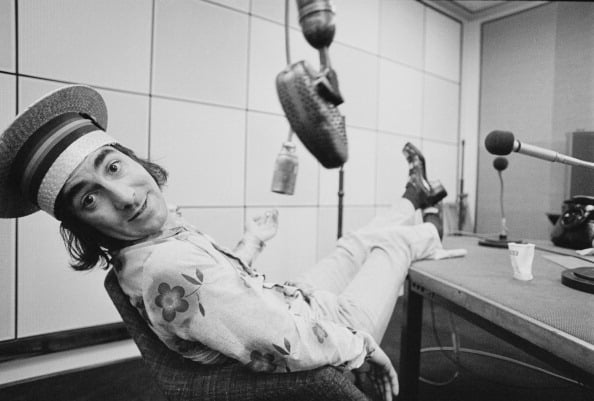Keith Moon at a Glance
- Categories: Celebrities, Celebrities > Rock Stars
- Net Worth: $10 Million
- Birthdate: Aug 23, 1946 - Sep 7, 1978 (32 years old)
- Birthplace: Wembley
- Gender: Male
- Profession: Drummer, Musician, Record producer, Composer, Actor, Songwriter, Model
- Nationality: United Kingdom
- Height: 5 ft 8 in (1.75 m)
Keith Moon: The Wild Life and Tragic Death of The Who’s Legendary Drummer
Keith Moon, the flamboyant and explosively talented drummer of The Who, left an indelible mark on rock and roll history. Known for his chaotic energy, innovative drumming style, and notorious off-stage antics, Moon’s life was as thrilling and unpredictable as his performances. This article delves into the life, career, net worth, and untimely death of this iconic musician, providing a comprehensive look at the man behind the kit.
Table of Contents
- What Was Keith Moon’s Net Worth?
- Early Life and Musical Beginnings
- The Who’s Rise to Fame
- Personal Struggles and Controversies
- The Tragic End
- Awards and Honors
- Real Estate
What Was Keith Moon’s Net Worth?
At the time of his death in 1978, Keith Moon’s net worth was approximately $10 million. Adjusted for inflation, this figure translates to around $40 million today. This wealth stemmed primarily from his successful career as the drummer for The Who, one of the most influential rock bands of all time. The band, comprised of Roger Daltrey, Pete Townshend, and John Entwistle, achieved global success, selling over 100 million records since their debut in 1965 with “My Generation.”
The long-term value of Moon’s estate has been estimated to be significantly higher, ranging from $70 million to $100 million. Beyond his work with The Who, Moon also released a solo album, “Two Sides of the Moon,” in 1975. He also showcased his versatility by playing Uncle Ernie in the 1975 film adaptation of The Who’s rock opera “Tommy.” His contributions to music were widely recognized, with a #2 ranking in a 2011 “Rolling Stone” readers’ poll of “The Best Drummers of All Time,” and a posthumous induction into the Modern Drummer Hall of Fame in 1982. Sadly, Keith Moon’s life was cut short by a Heminevrin overdose in September 1978.
Early Life and Musical Beginnings
Keith John Moon was born on August 23, 1946, in Wembley, England. He was the son of Kathleen and Alfred Moon and had two sisters, Lesley and Linda. As a child, Keith exhibited a highly imaginative and hyperactive personality. His love for music blossomed at a young age. He attended Alperton Secondary Modern School and, at 12, joined the local Sea Cadet Corps band, initially playing the bugle. Finding the bugle too challenging, he switched to drums and frequently practiced at Macari’s Music Studio. Moon left school at 14, later attending Harrow Technical College. He worked as a radio repairman to fund his first drum set, marking the start of his lifelong passion.
The Who’s Rise to Fame
Keith Moon’s drumming journey included lessons from Carlo Little of Screaming Lord Sutch and the Savages and a stint with the band the Escorts. He later joined the Beachcombers, a cover band. In 1964, Moon’s talent led him to audition for The Who, replacing Doug Sandom, and he was immediately invited to join. This marked the beginning of a legendary partnership.
The Who’s debut album, “My Generation,” released in 1965 on Brunswick Records (and titled “The Who Sings My Generation” in the U.S.), catapulted them to fame. The album reached #5 in the UK, was certified Gold, and the single “My Generation” became a top 10 hit. They followed with albums like “A Quick One” (UK) / “Happy Jack” (US) and “The Who Sell Out,” which included the US hit “I Can See for Miles.” The 1969 album “Tommy” was a breakthrough, achieving 2x Platinum status and being adapted into a film and a Broadway musical, highlighting the band’s impact on popular culture.
The band continued to release successful albums, including “Who’s Next” and “Quadrophenia,” solidifying their status as rock icons. Moon’s final album with The Who, “Who Are You” (1978), was released shortly before his death. His songwriting contributions included tracks like “I Need You” and “In The City.” He also collaborated with other musicians, including Jeff Beck, Jimmy Page, John Paul Jones, and Nicky Hopkins on “Beck’s Bolero” and provided background vocals on The Beatles’ “All You Need Is Love.”

Jack Kay/Daily Express/Hulton Archive/Getty Images
Personal Struggles and Controversies
Keith Moon’s personal life was marked by a series of relationships and personal struggles. He began a relationship with Kim Kerrigan in 1965, marrying her in 1966. They had a daughter, Amanda, though their marriage was tumultuous. Moon was sometimes violent toward Kerrigan, and they divorced in 1975. Later, he dated model Annette Walter-Lax until his death.
In 1970, Moon was involved in a tragic incident where he accidentally hit and killed his friend and driver, Neil Boland, after being attacked by patrons. The event was ruled an accident, but it deeply affected him. Beyond these tragedies, Moon was known for his destructive behavior, often wreaking havoc on hotel rooms and properties, fueled by substance abuse. His reckless spending habits led to financial difficulties, despite the band’s immense success. His substance abuse also affected his performances, leading to instances of passing out during concerts.
The Tragic End
In mid-1978, Moon moved into a London flat. He had been prescribed Heminevrin to help with alcohol withdrawal, but on September 6, 1978, he attended a screening with Paul and Linda McCartney. Returning home, he requested steak and eggs, which led to what would be his last words. He was found dead the next day, with an autopsy revealing an overdose of clomethiazole pills. Keith Moon was cremated on September 13th, leaving behind a legacy of musical brilliance intertwined with personal tragedy.
Awards and Honors
Keith Moon’s talent was recognized throughout his career and posthumously. He was named Best Drummer by the “NME” Awards in 1978. He was ranked #1 on Dave Marsh’s “The 50 Greatest Rock ‘n’ Roll Drummers” list and was voted the tenth-greatest dead rock star by “Rolling Stone” readers in 2011. In 2009, the UK’s Heritage Foundation honored him with a blue plaque at the Marquee Club.
Real Estate
In 1971, Moon purchased an 1,100 square foot home in Chertsey, Surrey, named Tara. He sold it in 1975, and it was demolished in 1990.
/**/

